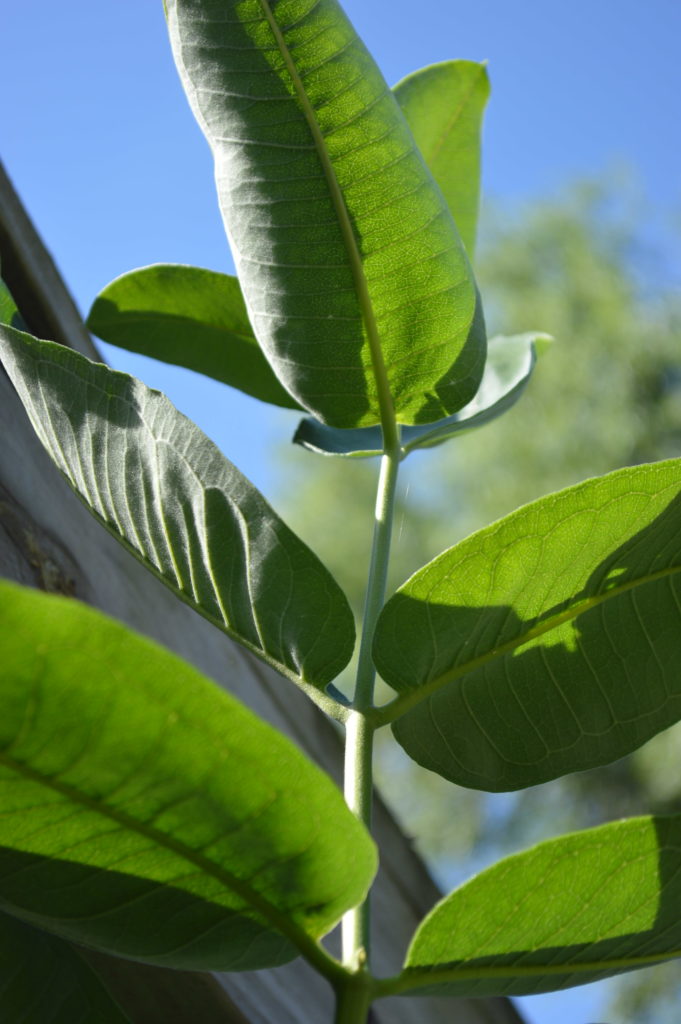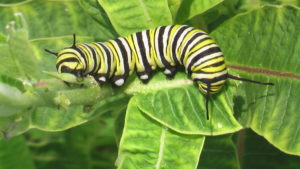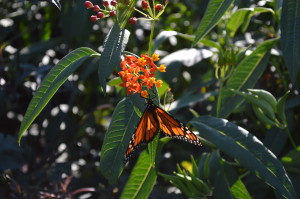
A tall milkweed plant reaches for the sun in a backyard in Cedar Rapids, Iowa, in August 2016. Milkweed serves as the sole host plant for monarch caterpillars. (photo/Cindy Hadish)
Milkweed – the sole food source for monarch caterpillars – used to grow freely in my backyard until trees turned the once-sunny yard into a shade garden.

A monarch caterpillar munches on milkweed in this photo shot in a previous gardening season. (photo/Cindy Hadish)
What was easy to grow years ago became a challenge, but I persisted, hoping to do my small part to help monarch butterflies, whose populations have dropped considerably in the past decade.
This summer, one milkweed has also done its part. At more than 7-feet-tall and still growing, the plant is reaching to the sun and seems to serve as a backyard beacon for monarchs, which I finally saw flitting around the yard last week.
It appears that at least one of the monarchs left a few eggs on the plant, as well. Almost microscopic, the tiny eggs were laid on the underside of the tall milkweed’s leaves.
I’m hoping to see caterpillars feasting on the towering milkweed in the coming week, as the eggs should hatch within just three to four days.
Monarch Watch provides an excellent life cycle timeline for monarch butterflies on its website.
Late summer-bloomers, such as asters, phlox, zinnias and purple coneflower, serve as food sources for adult monarchs that feed on the nectar to fuel their fall migration.
Iowa is an integral point in a proposed “monarch highway” that would run through the state. Learn more about the plans here.


No Comments Yet